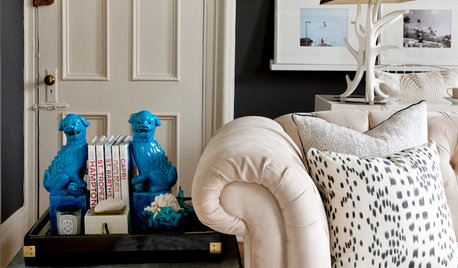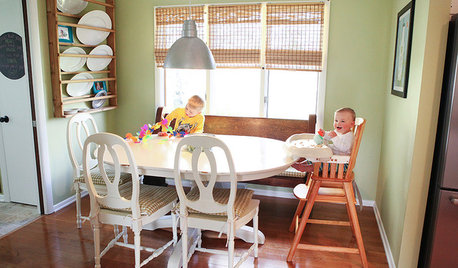An update and another question about dog obedience
CamG
11 years ago
Related Stories

PETSSo You're Thinking About Getting a Dog
Prepare yourself for the realities of training, cost and the impact that lovable pooch might have on your house
Full Story
EXTERIORSCurb Appeal Feeling a Little Off? Some Questions to Consider
Color, scale, proportion, trim ... 14 things to think about if your exterior is bugging you
Full Story
DECORATING GUIDES7 Things to Know About Foo Dogs
These Chinese decorative statues have a lengthy history and are powerfully symbolic
Full Story
FEEL-GOOD HOMEThe Question That Can Make You Love Your Home More
Change your relationship with your house for the better by focusing on the answer to something designers often ask
Full Story
SELLING YOUR HOUSE15 Questions to Ask When Interviewing a Real Estate Agent
Here’s what you should find out before selecting an agent to sell your home
Full Story
KITCHEN DESIGN9 Questions to Ask When Planning a Kitchen Pantry
Avoid blunders and get the storage space and layout you need by asking these questions before you begin
Full Story
Design Dilemmas: 5 Questions for Houzzers!
Post Ideas for Landscaping for a Modern Home, Updating a Rental and More
Full Story
REMODELING GUIDESConsidering a Fixer-Upper? 15 Questions to Ask First
Learn about the hidden costs and treasures of older homes to avoid budget surprises and accidentally tossing valuable features
Full Story
GREEN BUILDINGConsidering Concrete Floors? 3 Green-Minded Questions to Ask
Learn what’s in your concrete and about sustainability to make a healthy choice for your home and the earth
Full Story
MOVINGSaying Goodbye to One Home and Hello to Another
Honor your past and embrace your future with these ideas for easing the transition during a move
Full StoryMore Discussions








annzgw
CamGOriginal Author
Related Professionals
Bull Run Architects & Building Designers · Lomita Interior Designers & Decorators · Nashville Interior Designers & Decorators · Sweetwater Interior Designers & Decorators · Rosaryville Interior Designers & Decorators · Miami Beach Furniture & Accessories · Burr Ridge Cabinets & Cabinetry · Athens Flooring Contractors · Beaufort Flooring Contractors · Chesapeake Flooring Contractors · Johnson City Flooring Contractors · Mahwah Flooring Contractors · Mount Vernon Flooring Contractors · Orange Flooring Contractors · Swampscott Flooring Contractorsms_minnamouse
arkansas girl
CamGOriginal Author
arkansas girl
betsyhac
CamGOriginal Author
betsyhac
betsyhac
robertz6
User
User
ms_minnamouse
CamGOriginal Author
spedigrees z4VT
pamghatten
robertz6
User